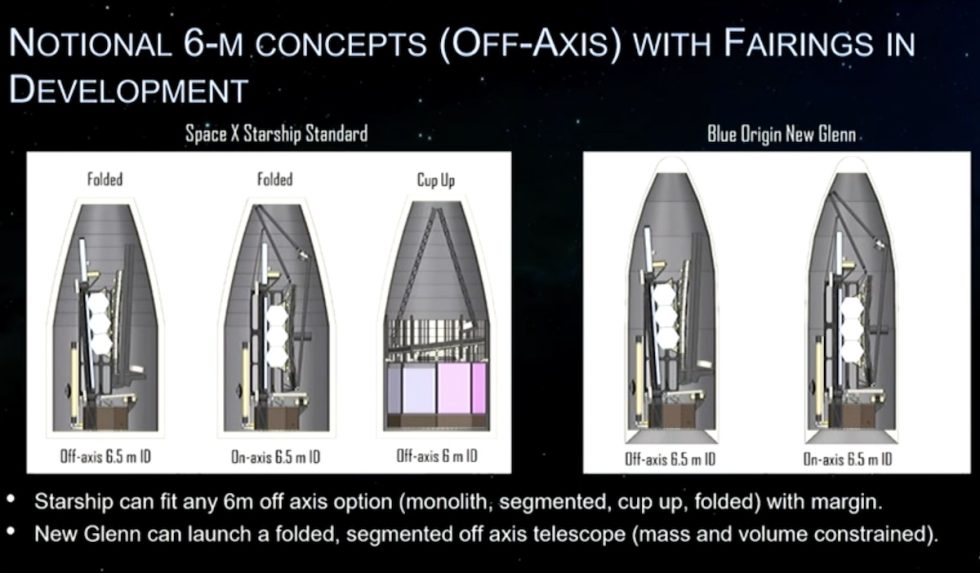
This slide from a presentation by Lee Feinberg, an engineer at NASA's Goddard Space Flight Center, shows concepts for a space telescope fitting inside the volumes of a SpaceX Starship rocket and a Blue Origin New Glenn rocket. (credit: NASA/Lee Feinberg)
Launching a follow-on to the James Webb Space Telescope (JWST) on Starship, for example, could unshackle the mission from onerous mass and volume constraints, which typically drive up complexity and cost, a panel of three astronomers recently told the National Academies' Committee on Astronomy and Astrophysics.
"The availability of greater mass and volume capability, at lower cost, enlarges the design space," said Charles Lawrence, the chief scientist for astronomy and physics at NASA's Jet Propulsion Laboratory. "We want to take advantage of that.”
Read 29 remaining paragraphs | Comments
Ars Technica - All contentContinue reading/original-link]




